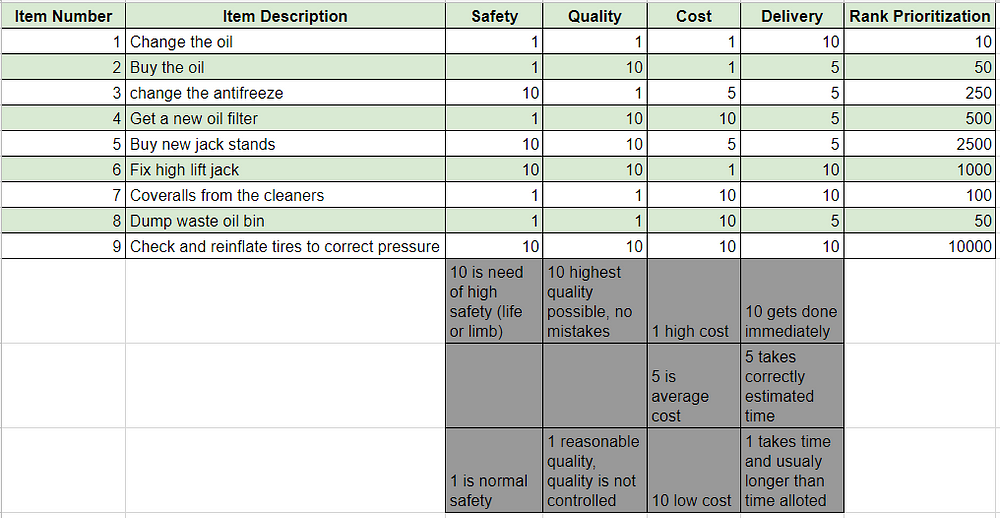Of the List of Threes Pick One - Prioritization
We talked about the Rule of Threes and how it infiltrates every part of our lives, and we also discovered how to Make List of Threes to put together the items in a semi-prioritized ranking to allow us to focus and have the opportunity to be disciplined to complete get the right work done at the right time. However, we did not talk about how to prioritize the items on that List of Threes. Of that list, we need to learn to pick one. Only one — initially. When we pick one, we are able to have clarity. This increased focus enables us to complete actions in a timely fashion. This completion success is why we are in the positions we are in — because we need to be effective.

Prioritization is not always a guess, and it can certainly be turned into an art depending upon how you set your prioritization. By understanding the necessary details and possible choices one can make the selection process robust and create additional value for the list of items you’re working beyond your one item. How do you know what to do next? Gut? Intuition? Taking care of the squeaky wheel first? Trying to quiet the person or customer who is yelling the most? Choosing any one of those can be a consideration of prioritization, but each of those is fire-fighting. You have no control over your own destiny. You are at the whim of the loudest and biggest issues. Use math. Yes, plain old predictable math. By creating a robust calculation can usually make it easier for you to fight the fires by stopping them before they start, providing you with an unfettered focus to remain disciplined to the list of actions and the order of completion that is needed.
For example, prioritization is necessary, especially in project management. Knowing Who Does What by When gives you the foundation for priorities. In project management, there are dependencies and predecessors that are required to be completed before following actions are able to be started (or completed). Some actions you are unable to start before a certain date or time or unless a particular milestone is reached. The same analogy is typical for your list of things to do; some actions just cannot be completed before others because of competing priorities
Factors to consider in prioritization include:
- Business necessity — Is the business stopped until you get this particular action complete?
- Financial reasons — You are unable to start a particular action until you get the finances in place, or they have to be spent before a certain time
- Safety — You may have to pick actions required to complete particular safety tasks first before starting any additional tasks (typically ranked like business necessity)
- Complexity — how complex are the actions on the list?
- Time — if we know certain activities are time constrained (date or limited time available) they can create the need for higher or lower ranking
- Quality — if there is a level of quality that needs to be applied (tougher ranking, sometimes too subjective)


Knowledge of each action and how some of the possible examples can give a particular value to each category. With that, our goal would be to make a method that enables rank prioritization of each of the actions on the list. To accomplish that we need to select three or four factors like the ones listed (or create your own — I show some simple examples above) and using those numbers scored in each as multipliers to find the highest value to each of the actions. Even in the simple example, the description is misleading — item 8 is dumping the waste oil in at the parts store when you go to buy new oil. Nevertheless, this sort of ranking will give you a score that will indicate which items you need to work in what order. One caveat — it is imperative to have the discipline to follow the rank prioritization after you’ve created it.
Have faith in the process — it will allow you to be successful!
Go forth and be brilliant!
Comments
Post a Comment